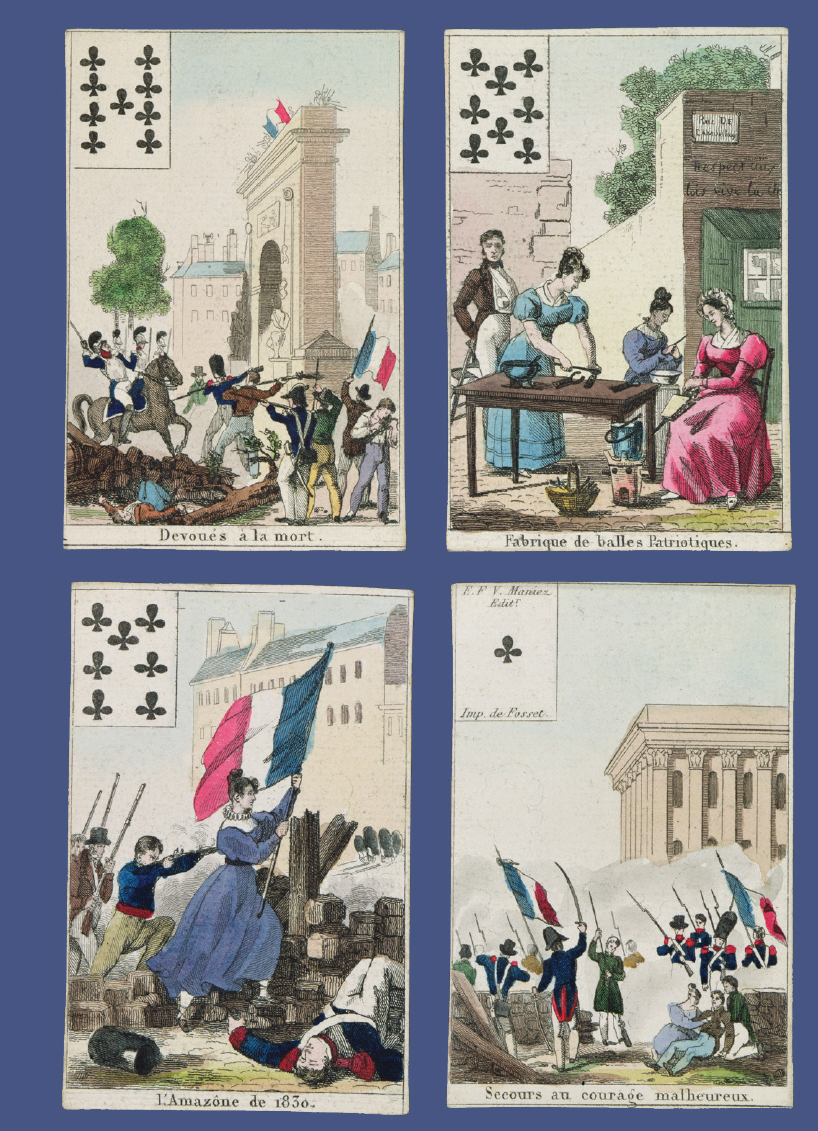The Revolution of 1830 in France
The Constitutional Charter granted by Louis XVIII in the Bourbon restoration of 1814 was basically a liberal constitution (see "The Grand Empire at Its End" in Chapter 19). The charter protected economic and social gains made by sections of the middle class and the peasantry in the French Revolution, permitted some intellectual and artistic freedom, and created a parliament with upper and lower houses.
However, the charter was hardly democratic. Only about 100,000 of the wealthiest males, out of a total population of 30 million, had the right to vote for the deputies who, with the king and his ministers, made the laws of the nation. Nonetheless, the “notable people” who did vote came from very different backgrounds. There were wealthy businessmen, war profiteers, successful professionals, ex-revolutionaries, large landowners from the old aristocracy and the middle class, Bourbons, and Bonapartists. The old aristocracy, with its pre-1789 mentality, was a minority within the voting population.
Louis’s conservative successor, Charles X (r. 1824–1830), a true reactionary, wanted to re-establish the old order in France. Increasingly blocked by the opposition of the deputies, Charles’s government turned in 1830 to military adventure in an effort to rally French nationalism and gain popular support. A long-standing economic and diplomatic dispute with Muslim Algeria, a vassal state of the Ottoman Empire, provided the opportunity.
In June 1830, a French force of thirty-seven thousand crossed the Mediterranean, landed to the west of Algiers, and took the capital city in three short weeks. Victory seemed complete, but in 1831, Algerians in the interior revolted and waged a fearsome war that lasted until 1847, when French armies finally subdued the country. The conquest of Algeria marked the rebirth of French colonial expansion.
Emboldened by the initial good news from Algeria, Charles repudiated the Constitutional Charter in an attempted coup in July 1830. The immediate reaction, encouraged by lawyers, liberal journalists, and middle-class businessmen, was an insurrection in the capital. Printers, other artisans, and small traders rioted in the streets of Paris, and three days of vicious street fighting brought down the government. Charles fled. Then the upper middle class, which had fomented the revolt, skillfully seated Charles’s cousin, Louis Philippe, duke of Orléans, on the vacant throne.

Scenes from the Revolution of 1830 in ParisTitled “Game of the Heroes of the Memorable Days of July,” these hand-colored playing cards portray incidents from the uprising in Paris in July 1830. The captions at the bottom read, clockwise from top left, “Duty unto Death,” “Making the Bullets of Patriotism,” “Aid to the Courageous Unfortunate,” and “The Amazon of 1830.” These fanciful yet moving scenes idealize the revolutionary zeal of the ordinary men and women who fought government troops and helped overthrow the rule of King Charles X. In reality, though, their efforts replaced the king but not the system. (Musée de la Ville de Paris, Musée Carnavalet, Paris, France/Giraudon/The Bridgeman Art Library)
Despite the abdication of Charles X, in France the political situation remained fundamentally unchanged. The new king, Louis Philippe (r. 1830–1848), did accept the Constitutional Charter of 1814 and adopted the red, white, and blue flag of the French Revolution. Beyond these symbolic actions, popular demands for reform went unanswered. The upper middle class had effected a change in dynasty that maintained the status quo and the narrowly liberal institutions of 1815. Republicans, democrats, social reformers, and the poor of Paris were bitterly disappointed. They had made a revolution, but it seemed for naught.
What explains the relatively peaceful nature of political change in Great Britain in the first half of the nineteenth century?
